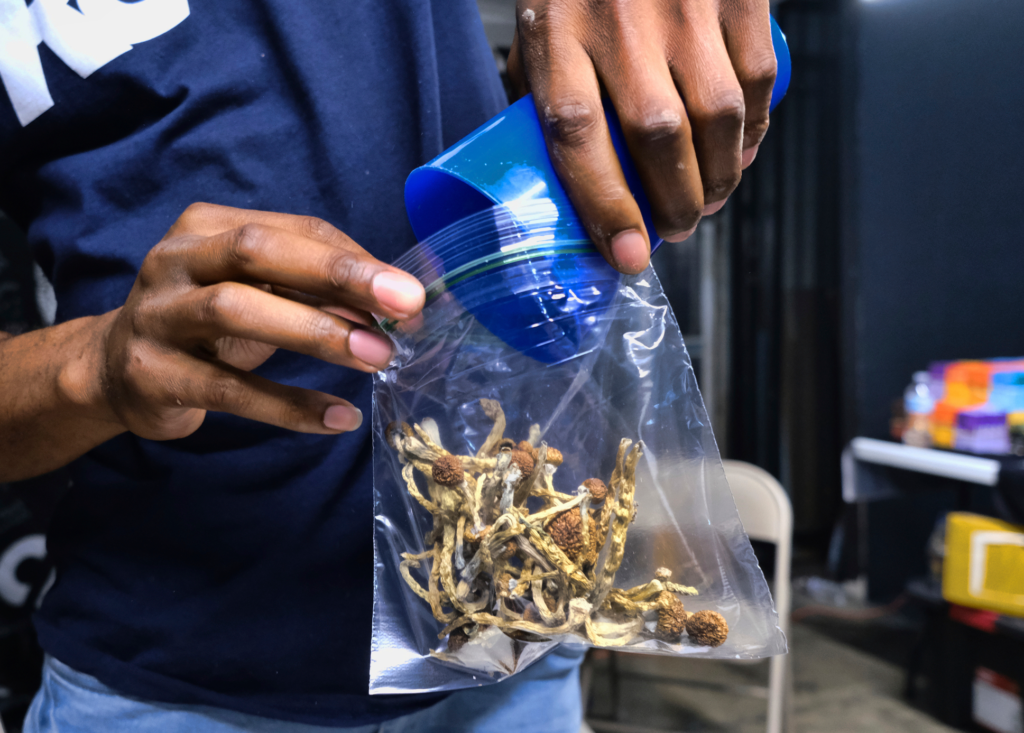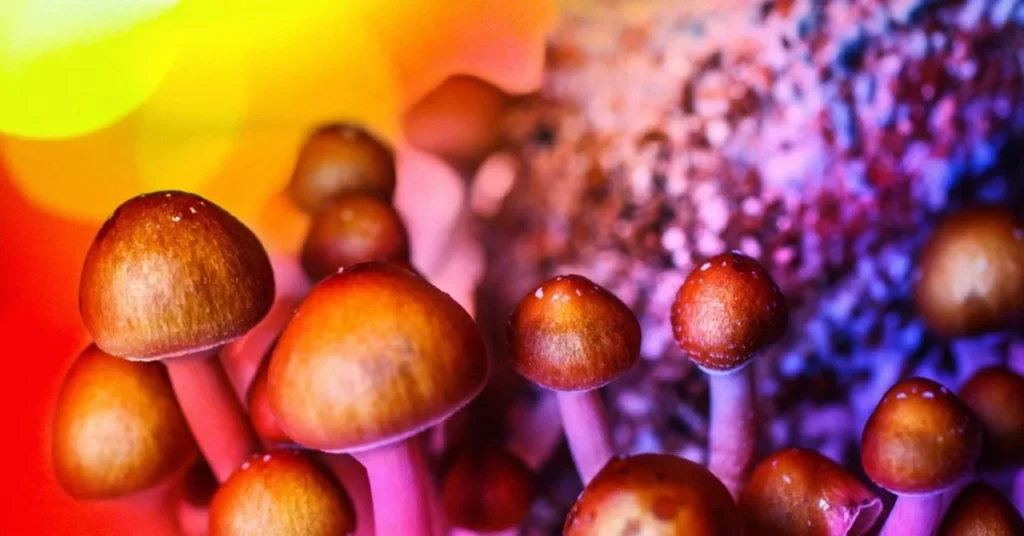When you think about consuming cannabis, magic mushrooms, acid or peyote, what springs to mind? Probably crazy visuals, couch-locking highs and journeys into the unknown. These days another way of approaching these substances is gaining in popularity. It’s called microdosing, and involves taking these drugs in a much smaller quantities than what you’d take for getting high or a full-blown trip.
With microdosing you won’t trip out, have crazy visuals or get high, things may be a little different. You might find your work goes better, important conversations go more smoothly, and your artistic practice feeling more expansive. Microdosing can “elevate” you to a micro-level above your normal self, and may improve your life on many levels. Research shows that people who microdose report improved creativity, enhanced emotional well-being, and improved day-to-day functionality.
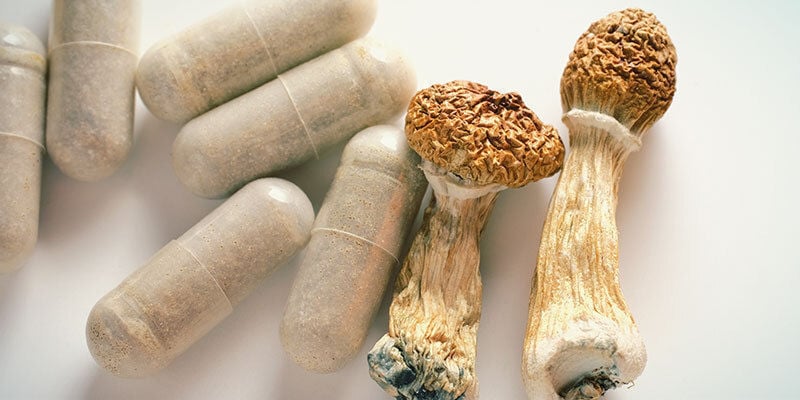
Microdosing is the practice of taking psychedelics at doses far less than what would be required for a trip or high, in order to experience lighter effects with more targeted benefits. Instead of taking 100μg of acid, you might take 10μg. Instead of taking three grams of shrooms, you might take 0.2 grams. Instead of smoking 20mg of THC, take a light 2mg puff. And instead of taking 400mg of mescaline, you might take 50mg.
With microdosing, the aim is for the experience to be sub-perceptual—you shouldn’t feel like you’ve taken a psychedelic. This allows you to experience many of the benefits, while still being able to go about your daily life in a functional way. Microdoses can act as safe and effective “performance-enhancers” in many domains, from studying to athletics to skill in navigating emotional situations to spiritual activation.
“Microdosing: Revolutionary way of using psychedelics (and cannabis) that improves mental and physical abilities”
For example, microdosing with magic mushrooms promotes the growth of new neurons in the hippocampus. Hippocampal neurogenesis has been associated with improvements in energy levels, mood, ability to concentrate, and cognition. One study showed that mushrooms can make parts of the brain that are usually disconnected “talk” to each other. This could be associated with increases in creativity.
No one knows when humans started doing psychedelics. Archaeological research shows that human cultural and technological complexity took a massive and rapid leap forward about 70,000 years ago. Terence McKenna hypothesised that this “cognitive revolution” may have taken place as a result of early humans stumbling across psilocybin. Were they microdosing? We can only speculate.
In the 19th century, Western science took notice of psychedelics. The “first wave of psychedelic research”, from 1880 to 1950, was focussed on mescaline. The true birth of microdosing wouldn’t occur until the second wave of psychedelic research, which hit its stride in the 1960s. This wave was focussed on psilocybin and LSD.
Hofmann was the first to propose microdosing. He suggested that doing so with LSD could have beneficial physical and mental effects. He claimed it was an under-researched area. Hofmann himself microdosed into his old age, taking long walks through the woods on low doses of acid. He must have been doing something right, as he lived to 102.
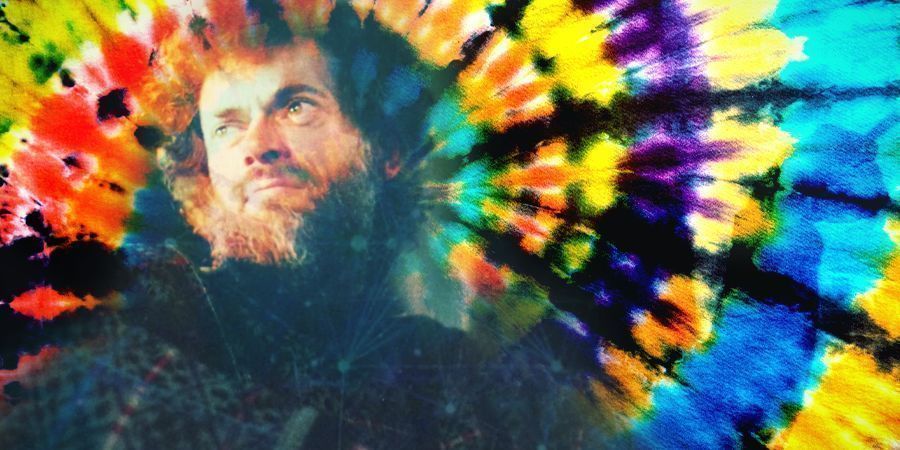
With Hofmann’s discovery, psychedelics were once again in the spotlight. During the 1960s, they featured on both sides of the culture war, with the CIA carrying out their controversial MK Ultra experiments, and youth across America conducting their own, less official experiments into these drugs and their effects. The ‘60s also included non-sinister scientific research on psychedelics: James Fadiman led the charge, publishing a study in 1966 on the effects of psychedelics and creativity (discussed in detail below).
With the 1971 UN Convention on Psychotropic Substances, LSD and psilocybin were criminalised around the world. As the hippie culture of the 1960s receded into the past, psychedelics declined in popularity, and research into their effects declined as well. However, with the 21st century and the rise of the millennial generation, psychedelics are experiencing a renaissance. We have now entered the third wave of psychedelic research.
Today, psychedelics have emerged from the shadows in a new guise: instead of being used to “tune in, turn on, drop out”, many millenials and Gen Xers are using the drug to enhance their careers. Programmers, startup entrepreneurs, and executives alike have started microdosing psychedelics to enhance their creativity, boost their energy, and gain a competitive edge.
Over the past few years, interest in microdosing has expanded. Several books and researches, as we’ll see in the following section, have sparked the public’s attention.
Hofmann was right: microdosing is indeed an under-researched area. That being said, recent years have brought exciting new developments. Before we dive in, it’ll be useful to look back at relevant psychedelic research of the past.
James Fadiman, lead researcher of the microdosing world, was involved in a key psychedelics experiment in the 1960s: the psychedelic agents in creative problem-solving experiment. Professionals working on difficult problems were given a small dose (a “millidose”—somewhere between a microdose and a regular dose) of LSD or mescaline, and were then asked to focus on a hard professional problem. As a result of the study, participants produced a new design for a linear electron accelerator beam-steering device, a new form of the magnetic tape recorder, novel furniture designs, and many other breakthrough products.
Participants in the study reported lowered inhibition, increased capacity to restructure problems in a larger context, and improved ability to associate concepts across domains. They also reported increased flexibility of ideation, heightened ability for visual ideation, easier accessibility of subconscious information, heightened empathy, heightened ability to obtain closure, and greater ability to visualise their solution.
Experiments like this demonstrate that psychedelics really can improve professional performance. Studies like this show psychedelic breakthroughs are no false grace; they’re useful, sometimes brilliant discoveries. Psychedelics seem to genuinely improve practical abilities.
In recent years, Fadiman’s interest has narrowed in on microdosing. Since 2010, he’s collected hundreds of reports from microdosers around the world. The response has been overwhelmingly positive.
One 2018 study in the Netherlands attempted to measure the effects of microdosing psilocybin on intelligence. They found that while fluid intelligence remained unaffected, convergent and divergent problem-solving abilities improved.
Another 2018 study, this one pre-registered and conducted at the University of Toronto, found that current and former microdosers score higher on measures of creativity, wisdom, and open-mindedness, and lower on measures of negative emotionality and dysfunctional attitudes. Given the study design, it’s impossible to tell which way the causality runs—whether microdosing makes people wiser, or wiser people are more likely to microdose. Another study from earlier that year showed similar results.
SCHEDULE FOR MICRODOSING
The most common microdosing schedule is to dose every third day. The rationale behind this is that you’ll have one day for the dose, one day where you’ll still be experiencing “afterglow” effects, and one “normal” day to rest and reset tolerance. The schedule will look something like this:

Fadiman suggests that this cycle takes place over a period of ten weeks, with the subject observing their experience, taking notes and following their normal daily routine while doing so. Interesting changes to look out for are any modification in behaviour, outlook, emotions and energy levels. Obviously, if any negative effects are experienced that make a person feel uncomfortable, they may choose to cease their intake of microdoses.
There are variations on this. Some people prefer to microdose every fourth day or less. Some people microdose sporadically, when the mood strikes them.
Microdosing every day tends not to work, for two reasons: one, the body builds up a tolerance to psychedelics quickly, and so microdosing daily will bring diminishing returns. Two, microdosing daily can take a toll on the mind and tip the balance towards negative symptoms like lethargy. A similar argument applies to microdosing every other day, though this schedule does have its proponents.
HOW TO MICRODOSE MAGIC MUSHROOMS?
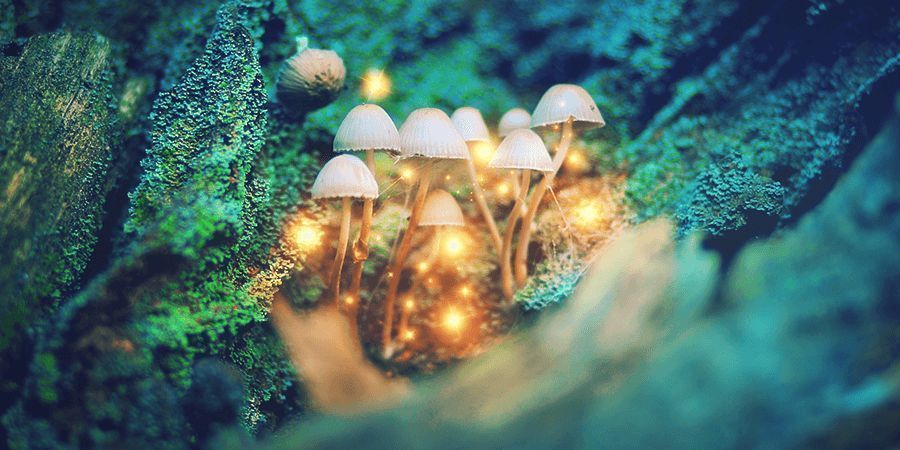
Magic mushrooms, or shrooms, are one of the most popular substances to microdose. They’re safe, all-natural, and tend to produce pleasant as well as productive effects.
Psilocybin, the active ingredient in shrooms, works by activating the brain’s 5-HT2A serotonin receptors. These receptors are located throughout the brain, and are especially dense in the cerebral cortex, mainly the prefrontal, parietal, and somatosensory lobes. The molecules of psilocybin and other tryptamine psychedelics are similar in shape to serotonin. This similarity allows them to bind directly with serotonin receptors (unlike SSRIs and amphetamines, which work to make serotonin itself more plentiful in the brain). Shrooms also contain psilocin and baeocystin, secondary tryptamines which produce similar effects to psilocybin.
Activation of the 5-HT2A causes a cascade of effects in the brain. For one, it seems to cause the brain’s cells to produce more brain-derived neurotrophic factor, or BDNF, which causes brain cells to grow and make connections more easily. It also causes the brain to release more glutamate, which in turn causes many downstream effects. One of these is to release dopamine into the prefrontal cortex, which can help with focus.
Overall, psilocybin causes the brain to become more awake. Under an fMRI, the cortex lights up like a lightbulb, and there seems to be more global activity happening over its surface. At the same time, the normal activity of the brain is disrupted, with the Default Mode Network—the part of the brain more active during normal waking life—less active than usual. Parts of the brain that usually never communicate “talk” to each other, showing that the brain is stretching and experimenting beyond its normal habits.
With microdosing, these effects are tempered, but still very much present.

THE BENEFITS OF MICRODOSING PSILOCYBIN
Psilocybin microdosers tend to find that they have more energy, an easier time connecting their thoughts to their emotions, and are more prone to seeing patterns and experiencing “leaps” of insight. Many users report being more motivated to work out, dive into creative projects, and tackle hard problems. Those who find LSD microdoses overstimulating may find mushrooms take the edge off by comparison.
Microdosing with mushrooms tends to last 4–6 hours, considerably shorter than the length of an acid microdose. This shorter experience can allow you more control over timing, and in particular, can help you time your dose such that it won’t interfere with your sleep.
HOW TO CONSUME PSILOCYBIN MICRODOSES?
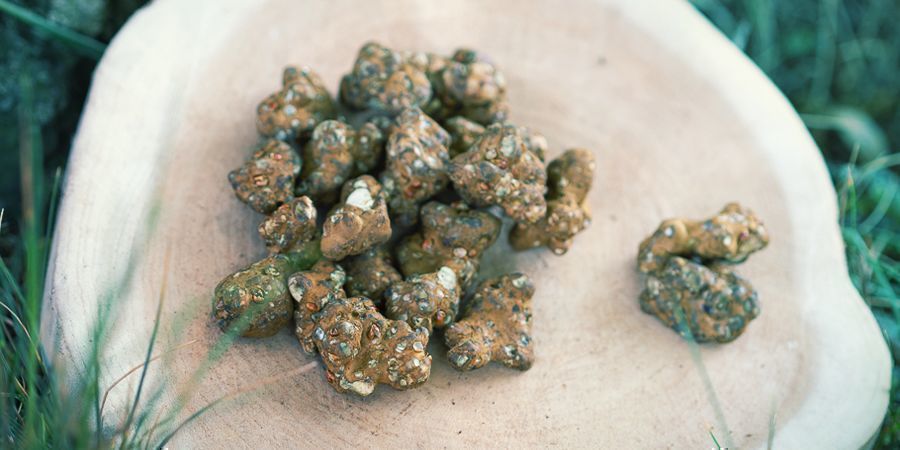
If anybody out there decides that microdosing is something they may benefit from and want to try, the obvious next step in the procedure is sourcing some mushrooms to use throughout the process. Perhaps the easiest way to obtain mushrooms is to simply to grow them yourself.
The most common way to take magic mushrooms is simply to eat them. You could nibble down a small stem and cap every three days for an easy—if rough—microdosing schedule. If you’re going about things this way, keep in mind that the cap tends to contain a greater concentration of psilocybin than the stem (0.44–1.35% of dry weight and 0.05–1.27%, respectively).
If you’d prefer more precision, you can measure out your mushroom microdose with a scale and make capsules. Microdoses usually consist of 0.2—0.5 grams of the dried fungus (which translates to 0.74mg to 6.5mg of pure psilocybin).
If you’re someone who tends to get stomach pain from mushrooms, you may want to try making mushroom chocolates, as many users report this eliminates the side effect. Magic mushroom tea is also a possibility. If you decide to use one of these recipes, make sure you measure how much you use so that you can accurately estimate your dosage.
HOW TO MAKE MAGIC MUSHROOM MICRODOSE CAPSULES
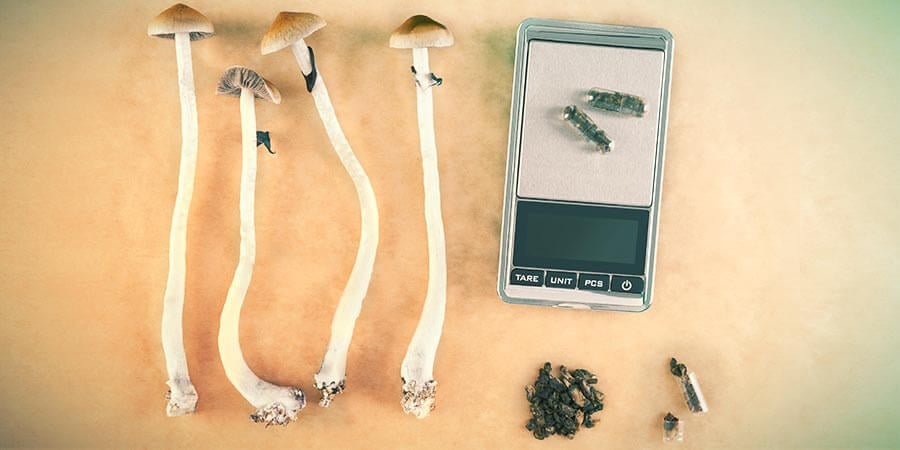
Making magic mushroom capsules is an efficient and simple way to enjoy consistent and measured doses without having to weigh them out or put up with the sometimes unpalatable taste mushrooms can have.
All you need are some empty capsules, a capsule machine, and a coffee grinder (preferably one that you don’t use anymore or one you can use specifically for the purpose of powdering your mushrooms.)
Making magic mushroom capsules can even be vegetarian-friendly, with vegetarian capsules now also widely available.
There are plenty of benefits to making capsules. The obvious ones are that you can get roughly the exact same dose each time and you can manage your consumption a lot easier. Mushrooms should take effect faster when consumed in powdered form and there’s also no taste factor involved.
Capsules are also a much stealthier option than carrying around a bag of dried mushrooms in a dodgy plastic baggie; it gives a lot more flexibility when it comes to storage and administation when out and about.
What you’ll need:
- Coffee grinder
- Capsule maker
- Empty capsules
- Dried magic mushrooms (grow you own)
WHICH STRAINS SHOULD I CHOOSE FOR MICRODOSING SHROOMS?
When it comes to shrooms, strain isn’t too important so long as the active ingredient is psilocybin. Different strains can contain different concentrations of psilocybin, so when you get a new batch you’ll generally have to do some trial and error before you get the dosage exactly right.
We would recommend the B+ strain for making capsules as it is easy to grow and produces consistent yields. They are one of our most popular, and produce multiple flushes of top-shelf mushrooms!
HOW TO MICRODOSE CANNABIS
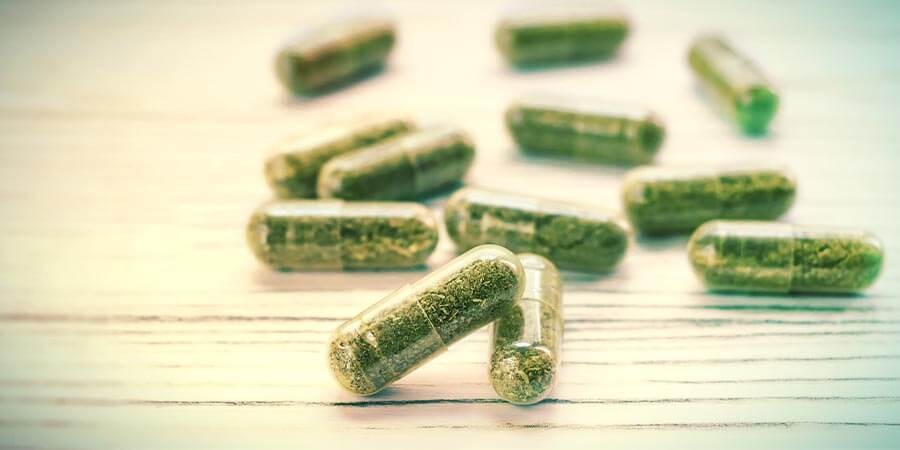
When you hear about microdosing, cannabis probably isn’t the first substance that comes to mind. That being said, THC-rich cannabis does have psychoactive properties, and for many, it’s a microdosing favourite.
Cannabis is actually well-suited to microdosing. It follows a biphasic effects pattern, meaning that at small doses it can have entirely different effects than at high doses.
Unlike substances like LSD, microdosing cannabis can be quite complicated. With LSD, there is one major compound interacting with the body, but cannabis has multiple cannabinoids that all play a vital role in shaping the effects on the body and mind. To make things even more complicated, different strains of cannabis have different ratios of cannabinoids, which can vary even more depending on how well they are grown. There is also personal tolerance to cannabinoids that needs to be taken into account. As such, microdosing has to be assessed on a case by case basis.
Cannabis works by activating the endocannabinoid system—a system responsible for maintaining internal homeostasis of the body. When we take high doses of cannabis, we risk throwing this system far outside of its normal range of action. With a microdose, however, we keep the system within its normal patterns, but provide a slight enhancement—it still works normally, but receives a small boost.
THE BENEFITS OF MICRODOSING CANNABIS
Microdosing cannabis can also be effective for those merely looking to add something extra to their day. Many users report that while a high dose can leave them couch-locked, a microdose can get them energised, giving them the kick they need for a creative, productive, and joyful day. Athletes sometimes also microdose with cannabis, as the improved endurance and reduced inflammation can help level-up their performance.
DOSING AND DURATION OF MICRODOSING CANNABIS
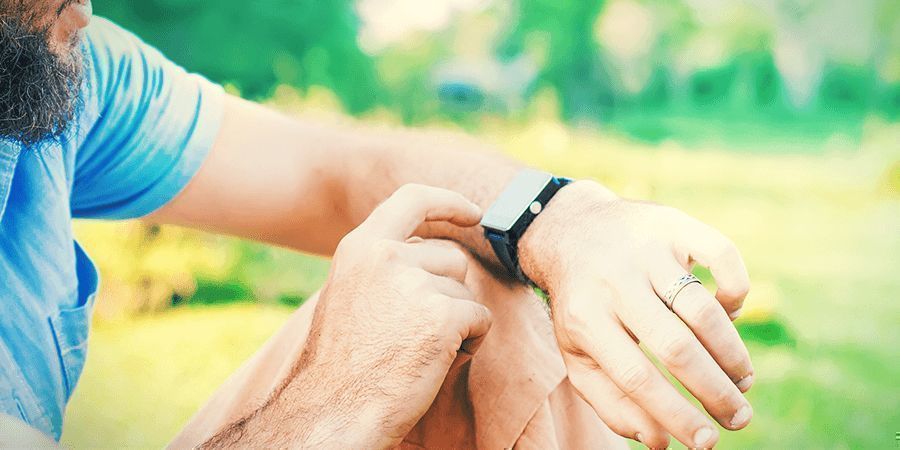
Cannabis microdoses fall in the range of 2.5–10mg THC. THC levels can vary widely by strain, with some buds having concentrations of 1%, and others having concentrations of 30%. If you know the THC concentration of your bud, you can insert the figure into a dosage calculator to determine a proper dose.
Generally, 1-2 puffs of a high-quality strain to start the day will do the trick, followed by 1-2 puffs in the evening. However, the main factor is to start small and experiment with delivery methods to see what suits you. You may find a drop from a tincture suits you better than smoking, or that vaporizing beats both; maybe the sustained effects of cannabis edibles will work better for you in the long run.
An inhaled cannabis microdose will be strongest within an hour or two, but residual effects may be felt throughout the day. With edibles, THC can stay active in the system for up to 11 hours. These numbers can vary based on body mass (a higher body mass will mean longer duration of the high).
As always with cannabis, strain is key. If you’re looking to use microdosing to get energised and productive, a sativa is the way to go. If, on the other hand, you want to relax in the evening, go for an indica.
HOW TO CONSUME A CANNABIS MICRODOSE?
As with regular cannabis dosing, there are three main ways to consume a cannabis microdose: smoking, vaping, and edibles. Smoking is often the easiest way to consume cannabis, but when it comes from microdosing, it’s not ideal: microdosing benefits from precision, and with smoking, this can be hard to come by. Vaping is a step up in this regard, and also allows you to bypass the unhealthy chemicals produced by combustion.
When it comes to microdosing, however, edibles are a favourite: they’re easier to dose precisely, they last all day, and they’re more discreet.
References
- (n.d.). Homological scaffolds of brain functional networks | Journal of The Royal Society Interface – https://royalsocietypublishing.org
- (n.d.). Final act of the United Nations conference for the adoption of a protocol on psychotropic substances | United Nations iLibrary – https://www.un-ilibrary.org
- (n.d.). – https://en.wikipedia.org
- (n.d.). – https://www.researchgate.net
- (n.d.). – https://journals.sagepub.com
- (2012/05/01). Nabiximols for Opioid-Treated Cancer Patients With Poorly-Controlled Chronic Pain: A Randomized, Placebo-Controlled, Graded-Dose Trial – https://www.sciencedirect.com
- Bilkei-Gorzo A, Albayram O, Draffehn A, Michel K, Piyanova A, Oppenheimer H, Dvir-Ginzberg M, Rácz I, Ulas T, Imbeault S, Bab I, Schultze JL, & Zimmer A. (2017 Jun). A chronic low dose of Δ9-tetrahydrocannabinol (THC) restores cognitive function in old mice – https://www.ncbi.nlm.nih.gov
- Catlow BJ, Song S, Paredes DA, Kirstein CL, & Sanchez-Ramos J. (2013 Aug). Effects of psilocybin on hippocampal neurogenesis and extinction of trace fear conditioning – https://www.ncbi.nlm.nih.gov
- Daniel Wacker, Sheng Wang, John D. McCorvy, Robin M. Betz, A.J. Venkatakrishnan, Anat Levit, Katherine Lansu, Zachary L. Schools, Tao Che, David E. Nichols, Brian K. Shoichet, Ron O. Dror, & Bryan L. Roth. (2017/01/26). Crystal Structure of an LSD-Bound Human Serotonin Receptor – https://www.cell.com
- Luisa Prochazkova, Dominique P. Lippelt, Lorenza S. Colzato, Martin Kuchar, Zsuzsika Sjoerds, & Bernhard Hommel. (2018/01/01). Exploring the effect of microdosing psychedelics on creativity in an open-label natural setting – https://www.biorxiv.org
- Martin Andersson, Mari Persson, & Anette Kjellgren. (2017). Psychoactive substances as a last resort—a qualitative study of self-treatment of migraine and cluster headaches – https://www.ncbi.nlm.nih.gov

